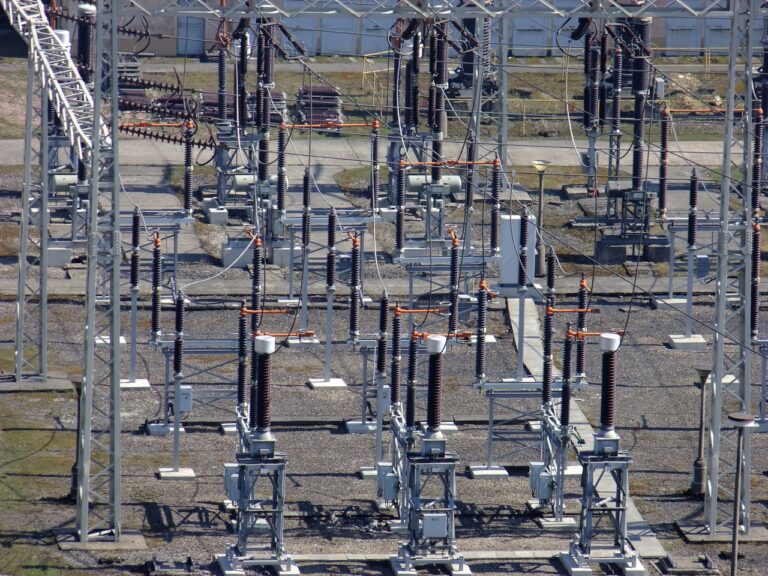In India, we have 50 HZ frequency at various AC voltage levels for transmission of three-phase power. Various generating stations are connected to the load centers via a complex network known as Grid. In India, we have various control centers such as NLDC, RLDC, and SLDC for control and supervision of load flow.
What is in an electrical substation?
Electric power is delivered to consumers through a complex network known as Grid. Electricity is generated at power plants far away from the load center and moves through a complex system of electricity substations, transformers, and power lines that connect electricity producers and consumers at various voltage levels.EHT substations are designed to handle voltages typically ranging from 132 kV (kilovolts) to 765 kV or even higher. These high voltage levels are necessary for efficient long-distance transmission of electricity.
What are the types of substations?

Air Insulated Sub-Station
Grid substations are integral units of the transmission and distribution of electrical energy. There are different ratings of grid substations and the layout of the grid substation varies with the specific rating.
The major part of any grid substations is (a) the Control room, (b) the switch yard
Proper lighting and illumination conditions are required for the entire grid substation and its surrounding area.
Various equipment installed in the electric substation:
- Busbar
- Power Transformer
- Lightening Arrester
- Current Transformer
- Potential Transformer
- Circuit Breaker
- Insulators
- Isolator
- Clamps and Connectors
Protection and Control:
Advanced protection and control systems are implemented to monitor and manage the substations. Protective relays and supervisory control and data acquisition (SCADA) systems are crucial for ensuring the safe and reliable operation of EHT substations.
Safety Protocol:
Strict safety protocols are enforced, including the use of personal protective equipment (PPE) and adherence to electrical safety standards. EHT substations are considered hazardous areas, and personnel must undergo specialized training.
Maintenance:
Regular maintenance and inspection are essential to keep EHT substations operating safely and efficiently. Maintenance schedules are typically established to monitor and address wear and tear on equipment.
TOOLS & PLANTS FOR GRID SUB-STATION
Like any other repair or improvement project around the GRID, electrical work requires tools. For most electrical projects, you’ll use mostly basic hand tools you already own, such as a hammer, tape measure, digital multimeter, level, and screwdrivers. There are also some specialty electrical tools that come in handy from time to time, and these are readily available at most GRID central stores
Summary
Overall, Extra High Tension substations are critical elements of the electrical power grid, ensuring the efficient and reliable transmission and distribution of electricity over long distances. Their design, operation, and maintenance are subject to strict standards and regulations to ensure safety and reliability.


